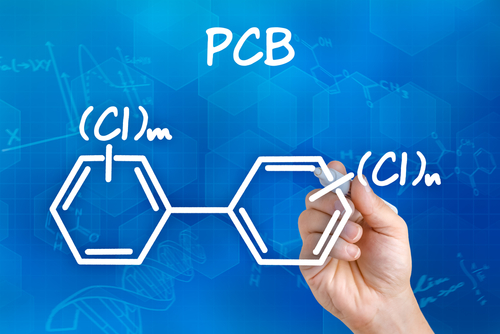 |
Since the 1950s, a titanium processor and parts manufacturer operated a 108-acre manufacturing facility in Henderson, Nevada’s Black Mountain Industrial Complex. The company is one of the largest titanium producers on Earth, supplying nearly one-fifth of the world’s titanium. The company manufactured PCBs during processing of rutile ore from Australia into high-quality titanium sponge, the first commercial form of titanium created in the manufacturing process.
PCBs are man-made organic chemicals that are considered probable carcinogens and have a long history of causing cancer and other health effects including problems with the immune system, reproductive system, nervous system, and endocrine system. As a result they were banned in the United States except for certain uses authorized by the EPA.
Forget expensive calls to lawyers and consultants. With Enviro.BLR.com, you get instant access, 24/7. Try it out today and get the 2014 EHS Salary Guide, absolutely free. Download Now.
During EPA inspections in 2005, 2006 and 2008, it was revealed that the company had been unlawfully producing PCBs as a by-product of its titanium production process without having first obtained the required TSCA-ban exclusion. During the 2008 inspection, the EPA also found that the company had used a solid waste landfill and an on-site trench to dispose of waste contaminated with PCBs, and in 2005 and 2007 had several times disposed of corrosive wastewater in an unpermitted surface impoundment in violation of the Resource Conservation and Recovery Act (RCRA). Under the settlement agreement reached with the EPA and DOJ the Company will pay civil penalties of $13.75 million for the TSCA violations and an additional penalty of $250,000 for the RCRA violations.
EPA began working with the company in 2007 to meet regulatory compliance requirements and according to the EPA, the company has both taken steps to significantly reduce production of PCBs and manage PCB wastes lawfully. The company is also in the process of documenting that it qualifies for the TSCA exclusion, which requires documentation to certify to the EPA the company’s compliance with TSCA requirements for PCB manufacturing and disposal.
Even as the company attempts to clean up its act, the EPA said “This settlement holds (the company) fully accountable for the period of its unauthorized manufacture and handling of harmful PCBs at the Henderson facility” the sum of which equals “substantial environmental cleanup and protection for the benefit of residents of the area, now and in the future.” To date the company has spent about $6 million on a variety of investigation, cleanup, and compliance measures including extensive sampling, draining and relining a surface impoundment, analyzing the extent of contamination in the solid waste landfill, and decontaminating processing equipment. Additional work yet to be performed under the settlement will cost at least another $1 million.
Everything You Need for Environmental Compliance
Enviro.BLR.com puts everything you need at your fingertips, including practical RCRA, CAA, CWA, hazardous waste regulatory analysis and activity, news, and compliance tools. Try it at no cost or risk and get a FREE report.
All told, the settlement requires the following actions, on top of the civil penalties totaling $14 million:
- Perform a plant-wide investigation to determine the nature/extent of any on-site contamination,
- Submit to EPA for EPA’s approval an investigation report and a cleanup plan,
- Remediate, as necessary, any contamination found,
- Submit a cleanup report for EPA’s approval, documenting that the company has taken all necessary actions required under the settlement,
- Document for EPA the process used by the company to manufacture PCBs and the concentrations manufactured, certify to EPA that any PCBs manufactured are managed according to the TSCA regulations, and commit to update that report if the manufacturing process changes in the future,
- Biannually monitor and report to EPA for three years any PCB concentrations in the plant’s releases to air, water and process wastes, and
- Allow Nevada to publish on its publicly available website the EPA-approved version of all submitted work plans and reports.
The EPA expects that the settlement will result in the removal of approximately 84,000 pounds of PCB-contaminated waste from the environment each year and will prevent the improper disposal of 56 million pounds of hazardous waste annually.
